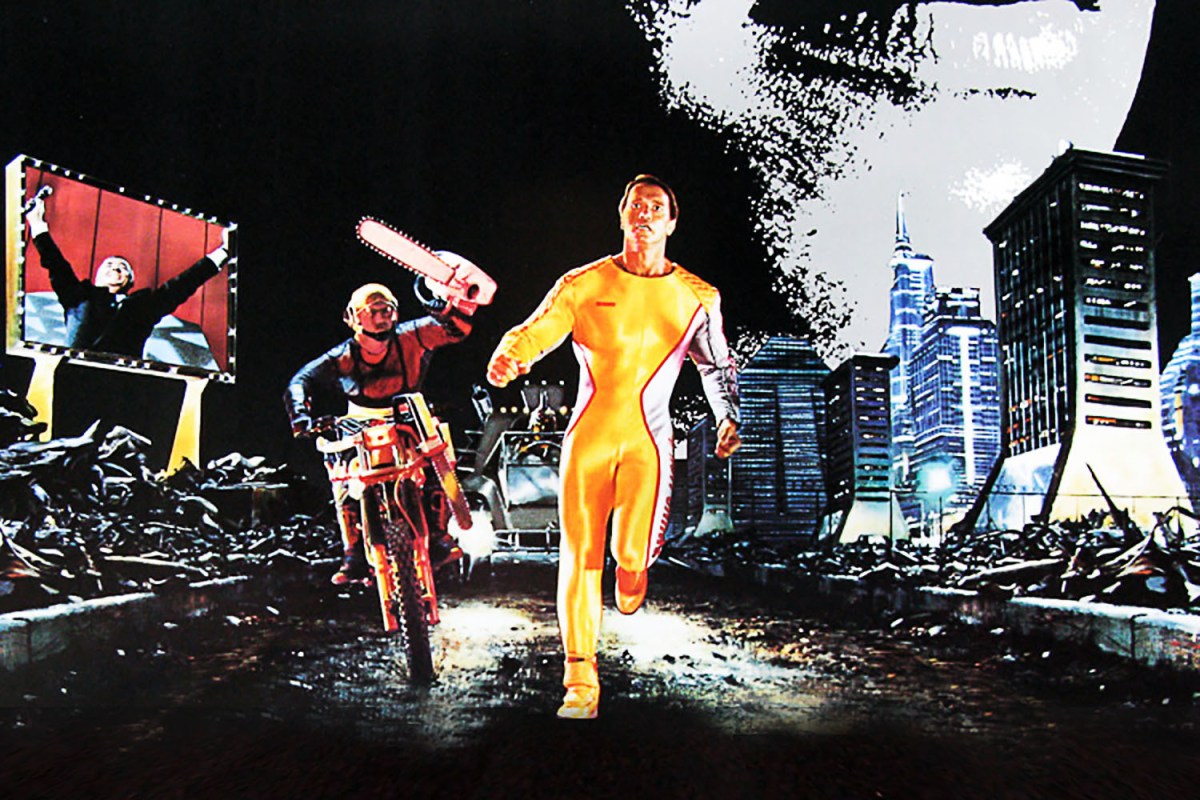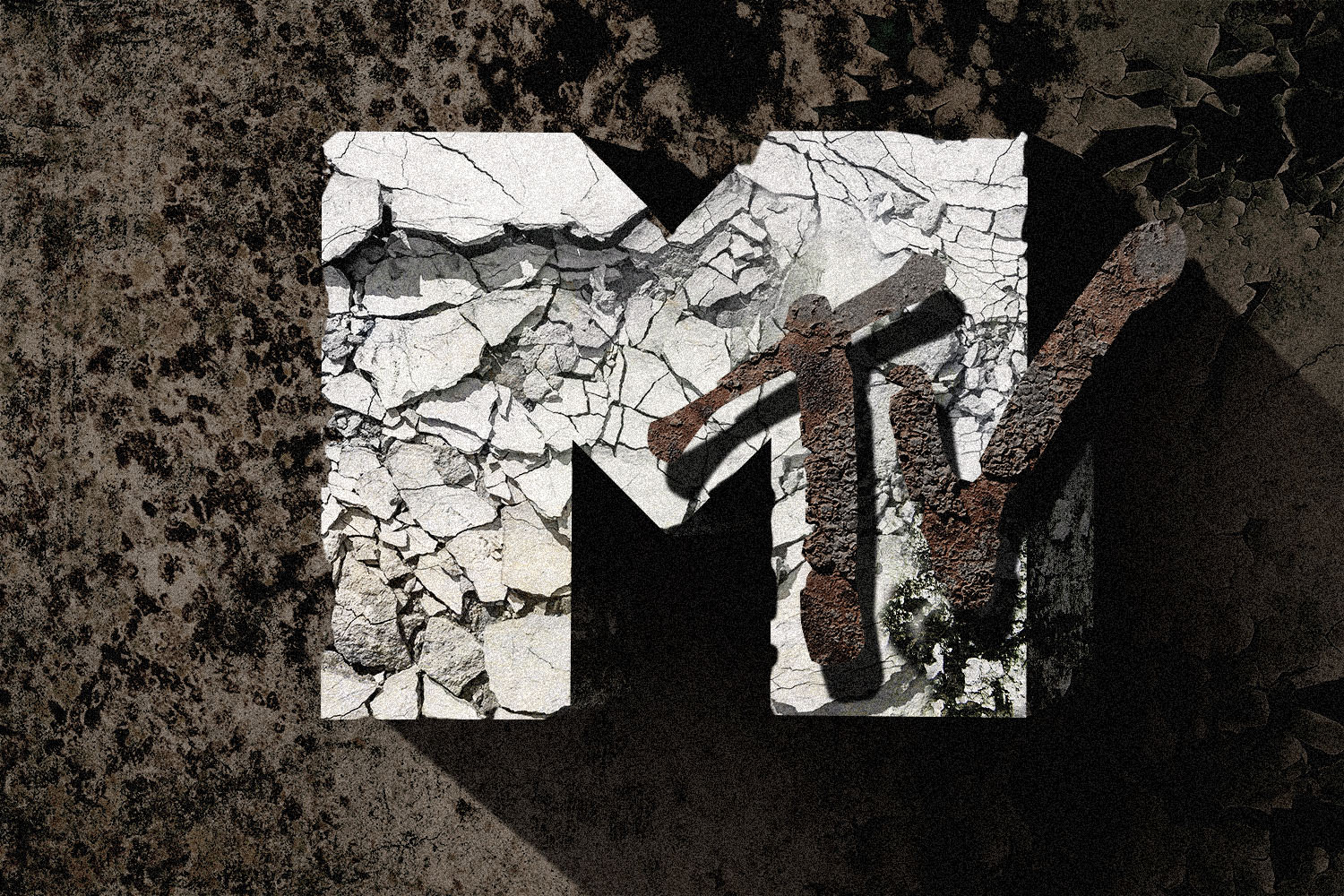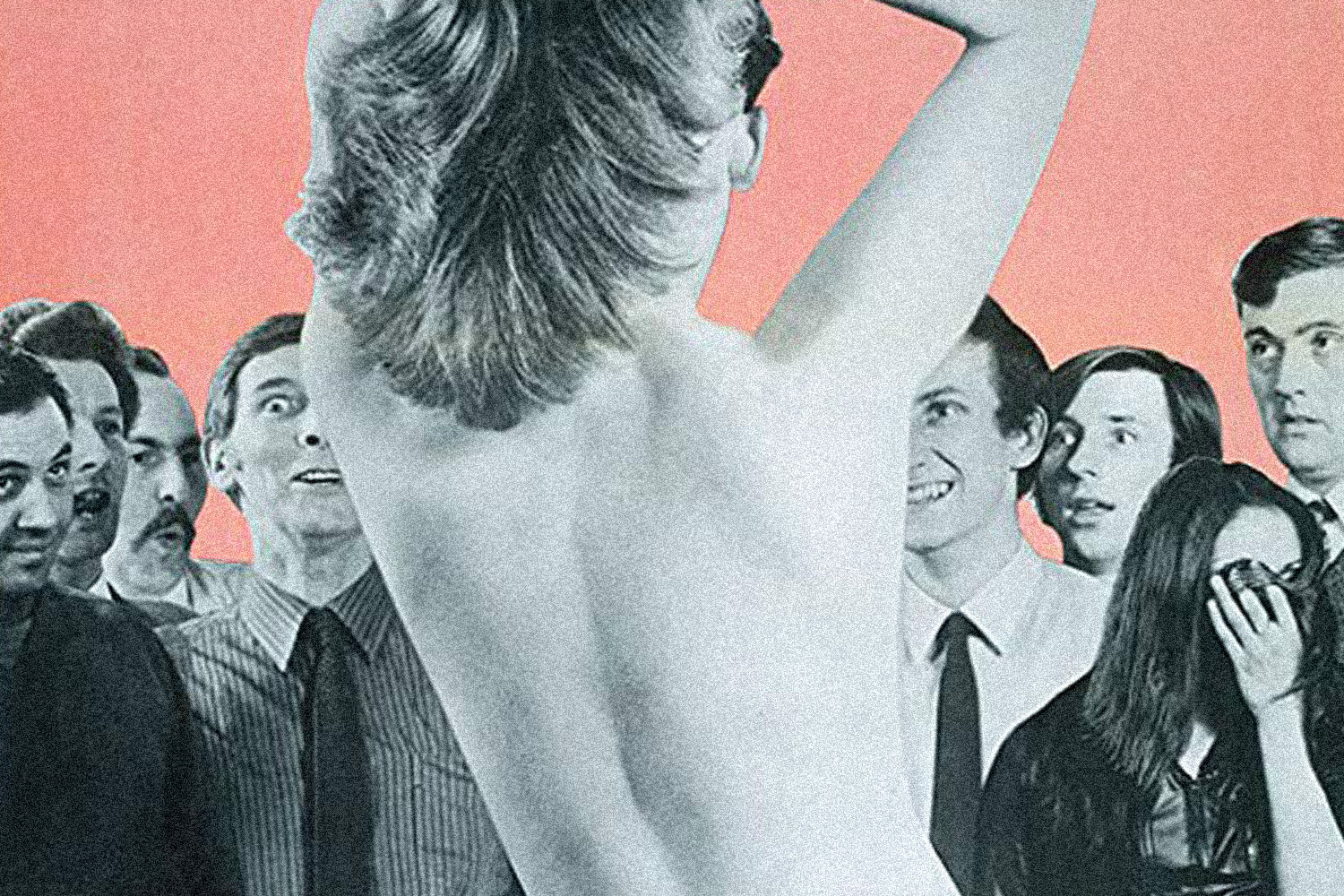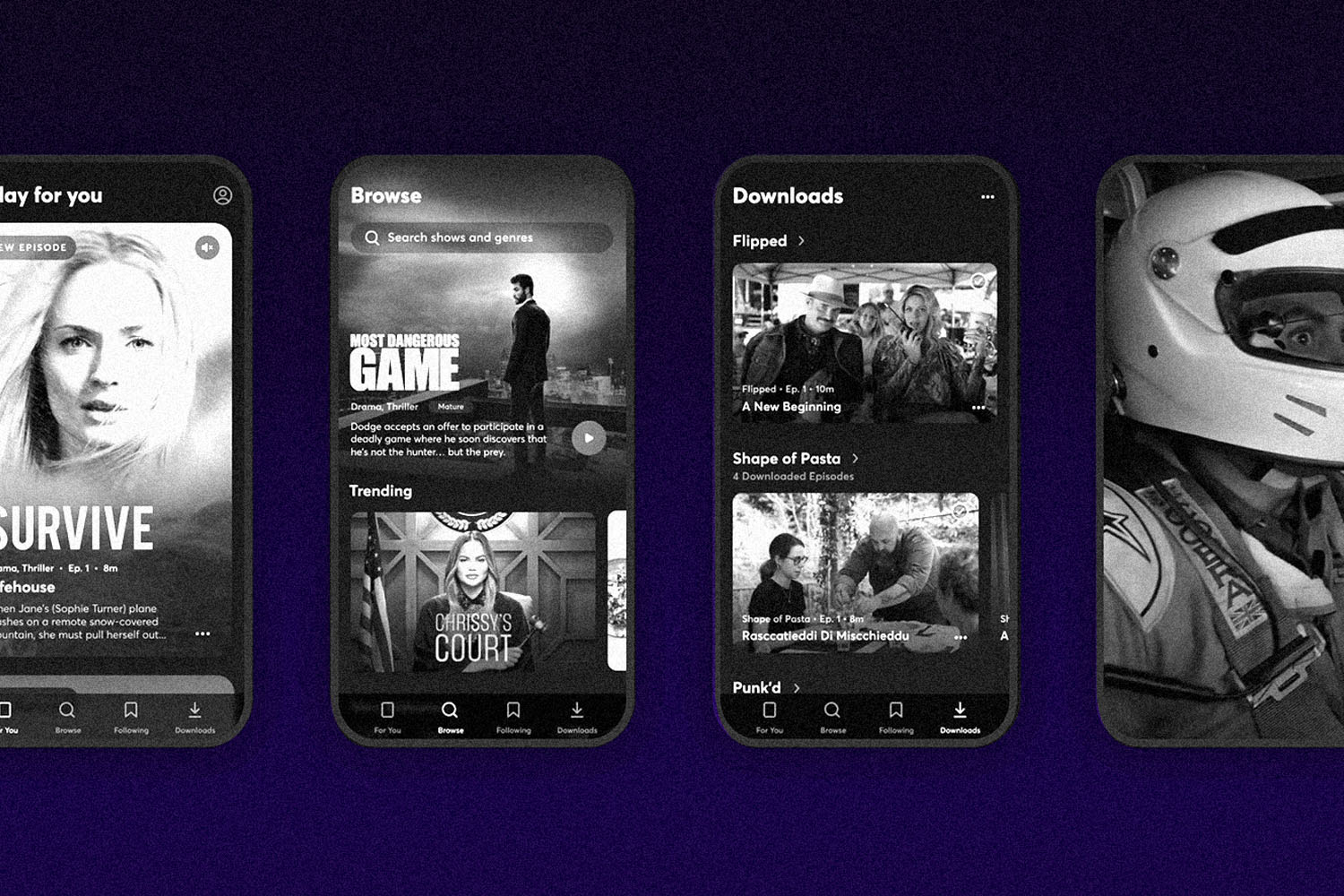The contestants are death-row inmates: terrorists, murderers, rapists. Enemies of the state and assorted menaces to society. The premise of the show is simple. If a contestant can stay alive for an entire episode, they earn their freedom. Of course, they never do.
That’s where “the stalkers” come in. Endowed with brute strength and armed with barbarous weaponry like flamethrowers and chainsaws, their job is to hunt the contestants through a booby-trapped arena and exterminate them with extreme prejudice. And they always do.
The live studio audience — well-dressed, law-abiding citizens who look just like your neighbors and grandparents — devour the gore. Each decapitation or mutilation is received with thunderous approval. The viewers at home are equally blooddrunk. Glued to their televisions, they pray or they curse, hoping for the same outcome regardless: that one of the stalkers will deliver furious justice.
The show’s name is “The Running Man.” In 2017, it was the highest rated show in the country.
Now, it’s important to clarify something: the show and the setting are both fictional. They come from the iconic 1987 Arnold Schwarzenegger film, also titled The Running Man, which was adapted from Stephen King’s 1982 novel. In the film’s 2017, America is a totalitarian police state. The world economy has collapsed and a scarcity of resources has fueled civil unrest.
The film takes a satirical approach to depicting near-future dystopia, with the nebulous border between political power and media influence sitting squarely in the satire’s crosshairs. Television is state controlled, and it injects reality TV, like a drug, into every household. Damon Killian, the smarmy host of “The Running Man,” played by a lupine Richard Dawson — who, fun fact, was the original host of Family Feud — is one of the most powerful men in the film’s universe. He is constantly on the phone with the justice department and has a direct line to the president. Oh, and the president has a Hollywood agent.
As you can imagine, a litany of commemorative articles and essays came out three years ago comparing the real 2017 to the fictional one. This is the kind of exercise that dystopian works encourage. On JSTOR, for example, you can find over 400 scholarly articles that were published in 1984 about George Orwell’s 1949 novel, 1984.
The consensus of writers who re-examined The Running Man in 2017 was that although our world had not devolved into a Stephen King nightmare, we weren’t moving in the opposite direction, either. Many commentators pointed to the consubstantial relationship between politics and television as the film’s most prescient element. After all, a reality TV star had really just been elected president and two of the film’s actors, Schwarzenegger and Jesse Ventura, had gone on to become governors.1
One question that most writers dismissed with nervous laughter in 2017 was “How close are we to a reality where a show like ‘The Running Man’ could actually air?” Sure, we’re living in strange times, most culture critics seemed to agree, but the idea that our idealistically founded, constitutionally framed republic would ever let people die for sport is absurd.
It feels less so now. In fact, it might be inevitable.
I know. This sounds like something you’d expect to hear from a guy wearing a tin-foil hat on the subway. But take a moment to think critically about the current state of mass media, and the role it occupies in our culture and in our individual lives. Can we connect the dots of history to gain a clearer understanding of our current trajectory? Unfortunately, I think so. And where we’re going, it’s not hard to envision people cheering and jeering at televised death.
Television has performed two broad functions since it arrived nearly a century ago: to inform and to entertain. Regarding the former, look at what we’re seeing on the news every morning. Blood is being spilled in the streets and we’re becoming eerily accustomed to graphic footage of Americans killing each other and civilians clashing with law enforcement. It’s important that we see this, but it’s also important to consider the psychological effects of exposure to televised violence. It’s gradually becoming normalized, and perhaps more significantly, it’s provoking a powerful desire for justice. In The Running Man, citizens are parched for justice, and the deadly game show is what the political-media establishment concocts to quench this thirst and redirect the population’s anger.
If we turn to the entertainment function of television, we observe an equally troubling landscape. Perhaps no example is more illustrative than MTV. Once worshiped as the edgy arbiter of pop-culture zeitgeist, MTV rose to prominence by popularizing music videos and pioneering reality TV through innovative series like The Real World. Today, the network is either a dying business or a monument of cultural decay. Have you watched MTV recently? If not, here’s what their current programming looks like:
In case you’re not familiar with Ridiculousness, John Gonzalez’s recent article for The Ringer is a fascinating read that examines how it became the center of the MTV universe. It’s a viral-video show hosted by skateboarder Rob Dyrdek in the vein of Tosh.0 and America’s Funniest Home Videos. Each episode, Dyrdek is joined by two snickering sidekicks and the occasional celebrity guest, like Guy Fieri or Justin Bieber. In front of a studio audience, they watch internet videos of people getting hurt and make jokes at their expense. And these aren’t cute videos like a toddler swinging at a piñata and hitting his dad in the nuts. These are videos that show bodies getting mangled and, in some cases, avoiding death by sheer luck.
The people in the videos on Ridiculousness don’t actually die. That seems to be the tacit understanding between the show and its audience, which apparently is what makes it okay to laugh. But the laughter is creepy, almost like something out of The Hunger Games. I watched a few episodes while writing this article and found it deeply disturbing. In one clip, a woman on a dirt bike gets clotheslined by a street lamp. She crumples to the ground and lies motionless. The show cuts to Dyrdek imitating her limp body as the audience howls. In another video, a visibly inebriated man tries to step from one party boat to another. He slips and literally impales himself on a railing stake. Dyrdek is laughing so hard he has to wipe the tears from his eyes.
To borrow Freudian terminology, if television represents our collective ego, the internet is our less regulated id. While there are a handful of TV shows like Ridiculousness, there are exponentially more social-media pages dedicated to commodifying pain and suffering as entertainment. The self-explanatory “Kids Getting Hurt” Instagram account has 3.5 million followers. Similar accounts like “Jerry of the Day” (skiers and snowboards meeting unfortunate fates) and “Kookslams” (same, but with surfers) have more than a million followers apiece. Their existence proves that schadenfreude has become one of the dominant emotions of our era, which is ominous.
The success of those pages and countless others contributes to another social-media phenomenon that warrants attention: the allure of “going viral” has a tendency to provoke masochistic behavior from users, particularly young ones.
A recent TikTok trend known as “the skull breaker challenge” has led to dozens of hospitalizations. And who can forget the “Tide pod” and “[light yourself on] fire” challenges of 2018? Whether they’re pursuing these “challenges” for clout, notoriety or a chance to become famous, kids are literally killing themselves. Last year, a 15-year-old boy died while attempting “the choking challenge.” This September, a 15-year-old girl died after being dared to ingest an excessive amount of Benadryl on TikTok.
Obvious response: Uh, how did we get here? This kind of ontological question is most effectively answered by examining the past to make sense of our present.
Public displays of violence were common in many ancient, medieval and early modern civilizations. Archaeologists have unearthed widespread evidence of human sacrifices across the planet, dispelling the bigoted myth that only certain “barbaric” cultures engaged in the practice. René Girard, the 20th-century philosopher and historian, wrote extensively about the function of sacrificial killings.
“The fundamental truth about violence,” he writes in his book Things Hidden Since the Foundation of the World, is that “if left unappeased, [it] will accumulate until it overflows its confines and floods the surrounding area. The role of sacrifice is to stem this rising tide…and redirect violence into ‘proper’ channels.”
Girard’s view assumes that humans are inherently violent beings. Some people may find this notion offensive, but there is scientific evidence that we are biologically programmed for violence. Sacrifices, therefore, represent a societal bloodletting that paradoxically serves to maintain peace and stability. But what happens when this stability is threatened by criminals? In addition to ritualized killings, there is one other form of public violence that pervades history.
Justice is a foundational pillar in every society. While laws and values vary by culture, the function of justice is always the same: it unifies a population under a moral umbrella and promises that everyone is playing by the same rules, in theory if not in practice. Of course, justice is also vital to a ruling class’s ability to maintain power. Throughout history, torture and execution have been used as public spectacles to deliver justice while doubling as a stark deterrent to would-be rule breakers. And like religious sacrifices, these displays provide an additional outlet to appease man’s primal thirst for bloodshed.
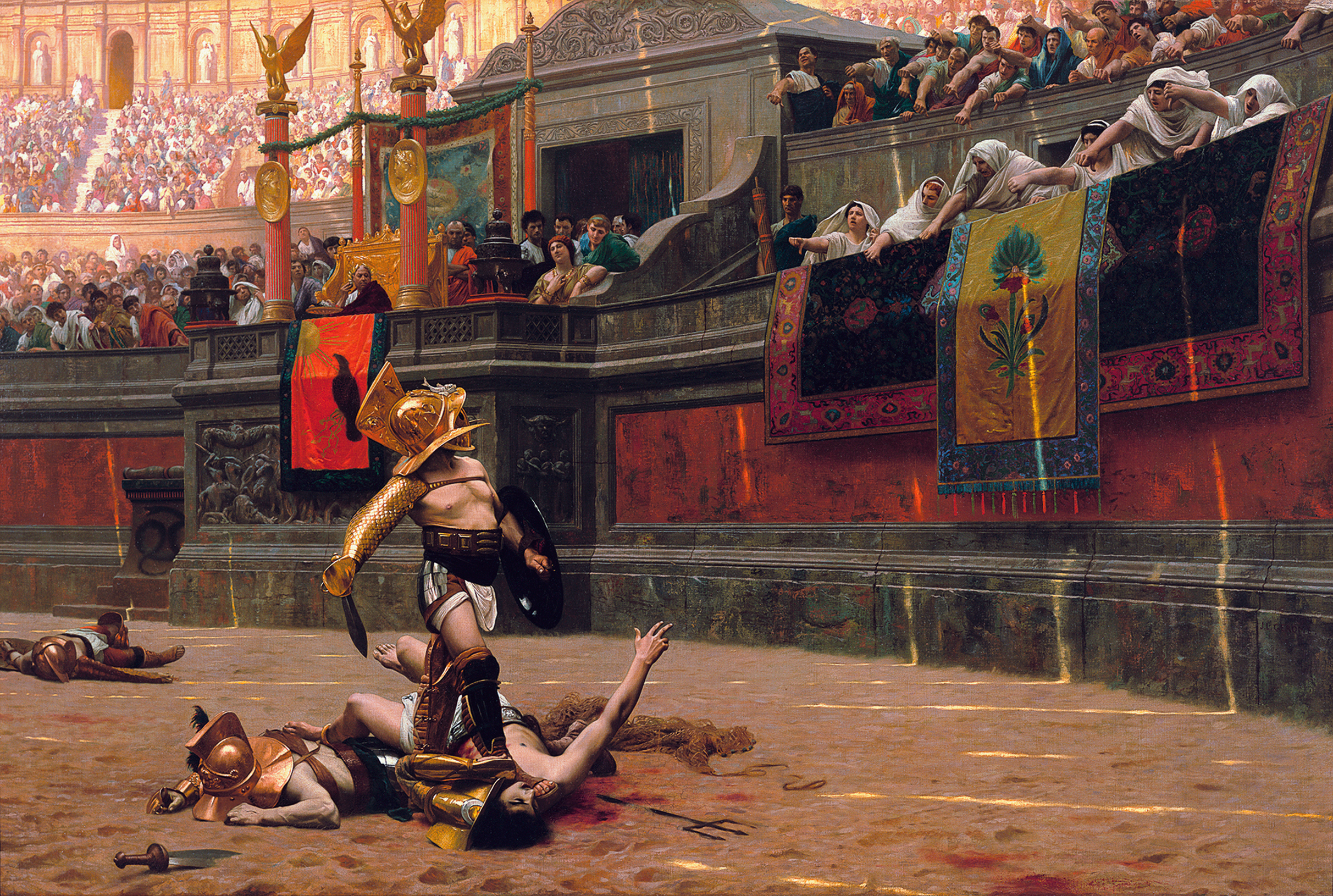
In the Roman Empire, a civilization idealized by many of our nation’s founders, violent death was ubiquitous. Travelers on the Via Appia, the main road into Rome, frequently encountered crucified prisoners. In 71 BC, the 6,000 slaves who revolted with Spartacus were nailed to crosses along this highway.
“No pre-modern culture seems to rival ancient Romans in the extent and duration of their institutionalized murder,” writes historian Margherita Carucci. “The arrangement of spectacular shows that the whole population was invited to attend [and] the intentional and orchestrated killing of criminals by the state in public areas” were staged as entertainment.
Roman magistrates recognized that public violence could be harnessed as a tool for social control. Gladiators, typically convicts or prisoners of war, fought to the death. Criminals were chained to poles and devoured by wild animals. Throughout it all, the crowds roared.
Grisly performative executions, not unlike the end of Braveheart, were prevalent through early modern history. Events like the Spanish Inquisition and the Salem Witch Trials demonstrate how ruling parties used public violence cloaked in justice to exterminate those who posed ideological (not even actual) threats to their power. By the 18th century, things started to change. Enlightenment ideals ushered in a wave of humanitarianism that decreased the public appetite for violence. In his 1724 book The Religion of Nature Delineated, English philosopher William Wolloston captured the shifting tide: “It is grievous to see or hear (and almost to hear of) any man, or even any animal whatever, in torment.”
Reform efforts sought to eradicate pain and suffering — physical as well as representational — from everyday life. In England, historian Karen Haltunnen writes, these efforts created a “culture of sensibility” and a “reformation of manners” that reduced instances of violent crime. Violent justice also fell out of fashion. Social movements, however, are not immune to Newton’s third law of motion: culture breeds counterculture.
“This emergent revulsion from pain,” Haltunnen writes, “[led to] the pornography of pain, which represented pain as obscenely titilating precisely because the humanitarian sensibility deemed it unacceptable, taboo.”
Gothic literature emerged as a pop-cultural manifestation of this subversive desire. Non-fiction writing followed suit. Before long, newspaper publishers discovered the profitable power of sensationalism. The American press corps proved particularly unscrupulous, going so far as to incite a war with Spain.2
Reality television is the pornography of pain’s sordid afterbirth. Going back to Candid Camera, which first aired in 1948, reality TV’s singular focus has always been the suffering of its subjects. Whether the suffering takes the shape of a humiliating American Idol audition, a spurned lover, a messy celebrity drug relapse or Johnny Knoxville getting repeatedly smashed in the testicles, it is obvious that we have an insatiable appetite for witnessing the pain of others.
Now that we’ve reached a point where Ridiculousness is playing in a constant loop on pop-culture’s most monolithic network, what comes next? How can our hunger be sated after growing accustomed to the taste of this diet snuff?
In 2017, most writers dismissed the idea that a show like “The Running Man” could ever become a reality, but the BBC’s Frank Swain struck an alarming tone.
“In the real 2017, there is certainly a market for suffering as entertainment. While few would admit to wanting death on their screens, TV producers have realised there is a desire for evermore extreme viewing,” Swain wrote. “Likewise, there’s no denying that many people’s appetite to see justice meted out is as strong as ever.”
Three years have passed since Swain’s assessment. Thanks to social media, the market demand for suffering has only increased, and calls for justice have become louder and angrier. Just look at the ideological canyon dividing our country right now. On one side, a demagogue who has fired up his base by claiming that a return to law and order is our only hope of salvation. Across the chasm glares an equally fervent opposition who see a corrupt leader and deep systemic injustices.
Violence is already spilling into our streets. If history offers any guidance, death will eventually fill our screens as entertainment. There will be uproar, but we will allow it. Some will even embrace it. After all, we’re only human.
1. In a stranger-than-fiction plot twist, Scharzenegger became the host of NBC’s The Apprentice when Trump departed to pursue the presidency. (One of the few private business interests Trump gave up when he took office. And even that’s a half truth — he stayed on as an executive producer and claims he fired Schwarzenegger after the show’s ratings tanked; the governator disputes this.)
2. A war from which the American government, it’s worth noting, benefited immensely
This article was featured in the InsideHook newsletter. Sign up now.
